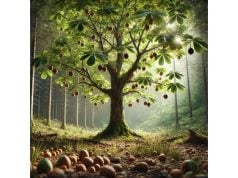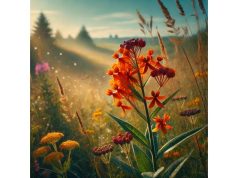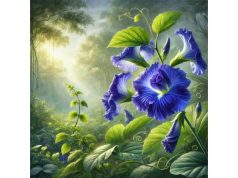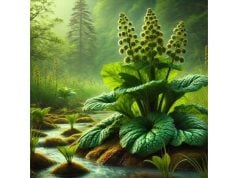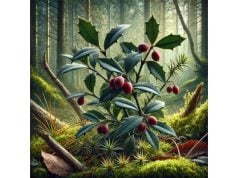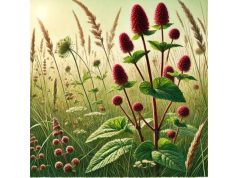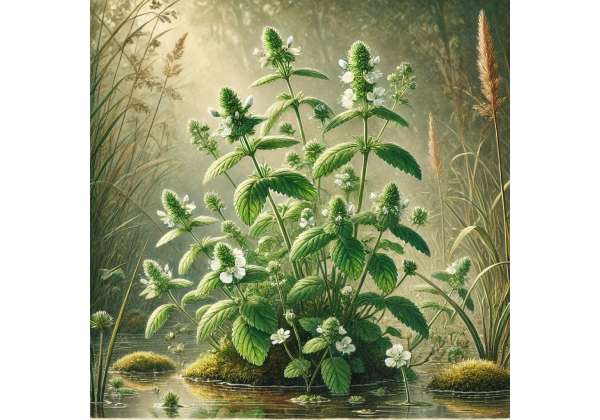
Bhringraj is one of those fascinating herbs that has captured the imagination of herbalists and natural health enthusiasts for centuries. Known in traditional Ayurveda as the “King of Hair” and revered for its wide range of therapeutic benefits, Bhringraj is much more than just a pretty name. Derived from the plant Eclipta alba (also known as Eclipta prostrata), this herb is celebrated for its potential to support hair health, liver function, digestion, and overall vitality. Its rich history, unique chemical makeup, and multifaceted applications make it a standout in the world of natural remedies.
Traditionally used to promote hair growth and prevent premature greying, Bhringraj is also employed to treat skin conditions, reduce inflammation, and support detoxification. Modern research is beginning to validate many of these traditional claims, confirming that Bhringraj indeed contains a host of bioactive compounds that can benefit both body and mind. Whether you’re a longtime fan of Ayurvedic medicine or just curious about natural health options, Bhringraj offers something for everyone.
Below are some of the most significant benefits of Bhringraj:
- Supports robust hair growth and helps prevent hair loss
- Aids in maintaining liver health and detoxification
- Possesses anti-inflammatory and antioxidant properties
- Promotes healthy digestion and gastrointestinal comfort
- Helps soothe skin irritations and supports wound healing
- Enhances overall vitality and may improve mental clarity
Table of Contents
- Bhringraj Botanical Profile and Identification
- Bhringraj Heritage: History and Cultural Influence
- Bhringraj Phytochemical Profile: Active Components and Composition
- Bhringraj Health Benefits: Therapeutic Advantages and Wellness Insights
- Bhringraj Properties: Unique Characteristics and Functional Qualities
- Bhringraj Uses and Safety Guidelines: Applications, Precautions, and Best Practices
- Bhringraj Research Spotlight: Scientific Studies and Evidence-Based Findings
- Bhringraj FAQs: Common Questions Answered
Bhringraj Botanical Profile and Identification
Bhringraj is derived from the plant Eclipta alba, a member of the Asteraceae family that is widely distributed throughout tropical and subtropical regions of Asia. The plant is typically a sprawling, herbaceous annual or perennial that can grow up to 60–90 centimeters tall. Its slender stems, deeply lobed leaves, and small, white to purplish flowers give it a distinctive appearance that has been noted by botanists and herbalists alike.
Recognizing Bhringraj
When you first come across Bhringraj, there are several characteristics that can help you identify it:
- Leaves: The leaves are one of the most noticeable features. They are deeply lobed with a slightly serrated edge and have a rough, hairy texture. Their green color can vary slightly depending on the growing conditions.
- Stems: Bhringraj has thin, wiry stems that often branch out and support a dense network of leaves. These stems may appear somewhat woody as the plant matures.
- Flowers: The small, daisy-like flowers typically appear in clusters. They are usually white, sometimes tinged with a hint of purple, and are less conspicuous than the foliage, but they add a delicate charm to the overall appearance.
- Growth Habit: This herb tends to form low clumps or mats, making it a popular choice for ground cover in traditional settings. Its ability to spread and adapt to various conditions has contributed to its extensive use in herbal medicine.
Natural Habitat and Cultivation
Bhringraj thrives in warm, humid environments with plenty of sunlight and well-drained soil. It is often found in fields, along riverbanks, and in garden settings where organic matter abounds. The plant is hardy and adapts well to different soil types, though it prefers slightly moist conditions. Traditional cultivation methods involve propagating Bhringraj from seeds or cuttings, ensuring that its potent qualities are maintained from one generation to the next.
In many parts of India and Southeast Asia, Bhringraj is grown in home gardens and small farms. Farmers have long valued it not only for its medicinal properties but also for its role in traditional rituals and daily practices. The ease of cultivation and the low maintenance required make it accessible even to those with limited gardening experience.
Botanical Importance
The botanical profile of Bhringraj is a key factor in its widespread use in traditional medicine. Its robust leaves and stems harbor a range of bioactive compounds that have been utilized for various therapeutic purposes. In Ayurveda, Bhringraj is considered a rejuvenating herb, often used to restore balance and promote overall health. Its identification markers not only help in distinguishing it from other herbs but also in ensuring that the correct species is used in medicinal preparations.
Bhringraj Heritage: History and Cultural Influence
Bhringraj boasts a rich history steeped in tradition and cultural significance. Revered in ancient Ayurvedic texts, this herb has been used for thousands of years to support hair health, liver function, and overall vitality. Its historical journey is interwoven with folklore, traditional healing practices, and even ceremonial rituals that highlight its revered status in various cultures.
Ancient Traditions and Medicinal Uses
Historically, Bhringraj was known as the “King of Hair” in Ayurvedic medicine, where it was primarily used to promote hair growth and prevent premature greying. Ancient practitioners recognized the herb’s potential not only for beautifying hair but also for its ability to support liver detoxification—a function that is still emphasized in modern herbal medicine. Bhringraj was commonly prepared as a hair oil, a tonic, or a decoction, each formulation designed to harness its restorative properties.
In traditional healing systems, Bhringraj was also employed to treat a range of other conditions, including digestive disorders, respiratory issues, and inflammatory ailments. The herb’s cooling properties were particularly valued for their ability to calm the body and mind, making it a versatile remedy for both physical and emotional imbalances.
Cultural and Ritualistic Significance
Beyond its medicinal applications, Bhringraj holds a special place in cultural rituals and everyday life. In many parts of India, it is customary to use Bhringraj in various ceremonial practices. For instance, it was often applied to the scalp during religious festivals and weddings as a symbol of purity, rejuvenation, and prosperity. The use of Bhringraj in these contexts underscores its role not just as a medicinal herb, but also as a cultural icon.
Folklore surrounding Bhringraj is abundant. Traditional stories often attribute magical qualities to the herb, suggesting that it can restore youth and vitality. Such legends have helped to cement its reputation as a life-enhancing plant, one that holds the power to transform both the body and the spirit.
Modern Revival
In recent years, there has been a resurgence of interest in Bhringraj as more people turn to natural remedies for wellness and beauty. Modern research is gradually validating many of the traditional claims associated with the herb, sparking a renewed appreciation for its benefits. Today, Bhringraj is widely available in various forms—from pure extracts and oils to capsules and topical formulations—making it accessible to those who wish to incorporate it into a contemporary health regimen.
This modern revival is a testament to Bhringraj’s enduring legacy. Its historical significance combined with current scientific research provides a robust foundation for its continued use in natural medicine and beauty care.
Bhringraj Phytochemical Profile: Active Components and Composition
The true magic of Bhringraj lies in its complex phytochemical composition. The herb is packed with a variety of bioactive compounds that contribute to its therapeutic properties. Understanding these chemical constituents not only helps explain the herb’s traditional uses but also provides insight into its potential applications in modern medicine.
Key Active Compounds
Bhringraj contains several important classes of phytochemicals that are responsible for its wide range of effects. Some of the key active compounds include:
- Alkaloids: Bhringraj is rich in alkaloids, which are known to have significant pharmacological activities. These compounds are believed to play a crucial role in the herb’s ability to promote hair growth and support liver health.
- Flavonoids: These natural antioxidants are abundant in Bhringraj and help protect the body from oxidative stress. The flavonoids in this herb contribute to its anti-inflammatory and immune-boosting properties.
- Saponins: Present in Bhringraj, saponins are known for their ability to reduce cholesterol and improve overall cardiovascular health. They also possess antimicrobial properties that help combat infections.
- Phenolic Compounds: These compounds have been shown to exhibit anti-inflammatory, antimicrobial, and antioxidant activities. In Bhringraj, phenolic compounds work synergistically with other phytochemicals to enhance its therapeutic potential.
- Triterpenoids: Contributing to the herb’s overall bioactivity, triterpenoids have been associated with various health benefits, including anti-inflammatory and hepatoprotective effects.
Synergistic Effects
One of the most fascinating aspects of Bhringraj is how its various bioactive compounds work together synergistically. The combined action of alkaloids, flavonoids, saponins, phenolic compounds, and triterpenoids creates a powerful therapeutic profile that is greater than the sum of its parts. This synergy is what gives Bhringraj its potent effects, whether it’s used to promote hair health, support liver function, or combat oxidative stress.
Modern Analytical Techniques
Researchers today use advanced analytical techniques such as high-performance liquid chromatography (HPLC) and gas chromatography-mass spectrometry (GC-MS) to study the phytochemical composition of Bhringraj. These methods allow for the precise identification and quantification of its active constituents, ensuring that both traditional preparations and modern formulations maintain consistent quality and efficacy. The data gleaned from these studies not only validates traditional uses but also informs the development of new therapeutic applications.
The Role of Phytochemistry in Bhringraj’s Efficacy
Understanding the phytochemical profile of Bhringraj is essential for optimizing its use in both traditional and modern contexts. By knowing which compounds are present and how they interact, herbalists and researchers can refine extraction methods and develop formulations that maximize the herb’s benefits. This scientific insight bridges the gap between ancient herbal practices and contemporary natural health products, ensuring that Bhringraj remains a potent tool in the quest for wellness.
Bhringraj Health Benefits: Therapeutic Advantages and Wellness Insights
Bhringraj is renowned for its impressive range of health benefits, which have made it a cornerstone of traditional Ayurvedic medicine. Its unique blend of bioactive compounds offers a host of therapeutic advantages, supporting everything from hair health to liver function, and even mental clarity. Here, we’ll take a closer look at the key benefits that Bhringraj provides and explain how these contribute to overall well-being.
Promotes Hair Health
Often called the “King of Hair” in Ayurveda, Bhringraj is perhaps best known for its ability to support hair growth and prevent premature greying. Traditionally, Bhringraj oil is applied to the scalp to nourish hair follicles, stimulate growth, and improve overall hair texture. The herb’s bioactive compounds are believed to increase blood circulation to the scalp, thereby promoting stronger, healthier hair.
Supports Liver Function
Bhringraj has long been used to support liver health and aid in detoxification. The herb is thought to enhance the liver’s ability to metabolize toxins, which is essential for overall health and vitality. By promoting liver function, Bhringraj helps in maintaining a balanced internal environment and contributes to the body’s natural detoxification processes.
Anti-Inflammatory and Antioxidant Effects
Bhringraj’s potent anti-inflammatory properties help reduce inflammation in various parts of the body, making it a useful remedy for conditions characterized by chronic inflammation. Additionally, its rich antioxidant profile protects cells from oxidative stress and free radical damage. This dual action not only supports overall cellular health but also helps to slow the aging process and promote longevity.
Aids Digestion and Gastrointestinal Health
In traditional medicine, Bhringraj is used to support healthy digestion. It is believed to stimulate the secretion of digestive enzymes, thereby improving the breakdown of food and easing gastrointestinal discomfort such as bloating and indigestion. This digestive support is crucial for the effective absorption of nutrients, which in turn fuels overall health.
Enhances Mental Clarity and Reduces Stress
Bhringraj is also valued for its calming properties. It is traditionally used to promote mental clarity and reduce stress, making it a popular ingredient in formulations designed to support a balanced mood. The herb’s mild sedative effects help to ease anxiety and promote relaxation, contributing to improved cognitive function and emotional well-being.
Supports Skin Health and Wound Healing
When applied topically, Bhringraj can help soothe irritated skin and promote wound healing. Its antimicrobial and anti-inflammatory properties make it effective in reducing redness and inflammation, while its antioxidant components protect the skin from environmental damage. This makes Bhringraj a valuable addition to natural skincare routines, particularly for those seeking a holistic approach to skin health.
Recap of Health Benefits
- Hair Health: Stimulates hair growth, reduces greying, and nourishes the scalp.
- Liver Support: Enhances detoxification and supports liver function.
- Anti-Inflammatory and Antioxidant: Reduces inflammation and protects against oxidative stress.
- Digestive Aid: Improves digestion and eases gastrointestinal discomfort.
- Mental Clarity: Promotes relaxation and reduces stress for better cognitive function.
- Skin Healing: Soothes skin irritations and promotes wound healing.
Bhringraj’s diverse range of health benefits underscores its value as a holistic remedy. Its ability to support multiple body systems makes it an appealing choice for those looking to enhance their overall health naturally.
Bhringraj Properties: Unique Characteristics and Functional Qualities
Beyond its well-documented health benefits, Bhringraj is admired for its unique properties and functional qualities that set it apart from other herbal remedies. These attributes contribute to its effectiveness and versatility in both traditional and modern applications.
Distinctive Physical Characteristics
Bhringraj is easily recognized by its lush, green foliage and its characteristic small, purple flowers that bloom during the warmer months. The plant has a robust appearance, with a sprawling growth habit that allows it to thrive in various environments. Its leaves are slightly hairy, and when crushed, they release a distinctive, earthy aroma that is both soothing and invigorating.
Sensory and Aromatic Qualities
One of the standout features of Bhringraj is its subtle yet pleasant aroma. The herb’s scent is often described as earthy with hints of musk and a touch of sweetness. This aromatic quality not only adds to its appeal in traditional applications but also makes it a popular ingredient in aromatherapy blends. The fragrance of Bhringraj is believed to promote relaxation and mental clarity, contributing to its overall therapeutic profile.
Chemical Stability and Versatility
Bhringraj is renowned for its stable chemical composition. The bioactive compounds in the herb, including various alkaloids, flavonoids, and phenolic compounds, remain potent even after processing. This stability allows Bhringraj to be effectively incorporated into different formulations—be it in tinctures, powders, oils, or capsules—without significant loss of efficacy. Its adaptability in various forms makes it a reliable ingredient in both traditional remedies and modern supplements.
Functional Attributes in Modern Applications
The unique properties of Bhringraj extend to its functional uses in health and beauty products:
- Hair and Scalp Care: The herb is widely used in hair oils and shampoos to promote healthy hair growth and reduce hair fall.
- Liver and Detoxification Support: Bhringraj is a key ingredient in herbal formulations aimed at supporting liver function and detoxification.
- Anti-Inflammatory and Antioxidant: Its potent anti-inflammatory and antioxidant properties make it a valuable addition to supplements and skincare products designed to combat aging and promote overall vitality.
- Digestive and Immune Support: The herb’s ability to enhance digestion and boost immune function contributes to its versatility as a holistic remedy.
Cultural and Aesthetic Significance
Bhringraj has also held a special place in cultural traditions, particularly in Ayurvedic medicine. Revered as a rejuvenating herb, it has been used in rituals and daily practices to promote longevity and overall well-being. Its historical significance adds an extra layer of appeal, bridging the gap between ancient wisdom and contemporary natural health practices.
Key Functional Qualities
- Robust Appearance: Characterized by lush green leaves and delicate purple flowers.
- Subtle Aroma: Offers an earthy, musky fragrance with a hint of sweetness.
- Chemical Stability: Retains its bioactive compounds across various preparations.
- Multifunctional: Supports hair care, liver health, anti-inflammatory action, and digestive wellness.
- Cultural Heritage: Holds a revered place in Ayurvedic traditions and natural healing practices.
Bhringraj’s unique properties make it a versatile and powerful herb, capable of addressing a wide array of health concerns while also adding sensory and aesthetic value to modern formulations.
Bhringraj Uses and Safety Guidelines: Applications, Precautions, and Best Practices
To truly benefit from Bhringraj, it’s important to use it correctly and safely. Whether you’re incorporating it into your hair care regimen, taking it as a supplement, or using it in a traditional decoction, following the proper guidelines will help you maximize its benefits while minimizing any risks.
Common Applications
Bhringraj is used in a variety of ways, each designed to leverage its potent properties:
- Hair Care: Traditionally, Bhringraj is used as an oil for the scalp to promote hair growth and prevent premature greying. It is often mixed with other herbal oils and applied directly to the scalp.
- Tinctures and Decoctions: Bhringraj can be prepared as a tincture or decoction to be taken internally. These preparations are commonly used to support liver function and aid in detoxification.
- Topical Applications: Bhringraj extracts are incorporated into creams, ointments, and shampoos to help reduce inflammation, soothe the scalp, and improve skin health.
- Dietary Supplements: In modern natural health practices, Bhringraj is available in capsule or tablet form, providing a standardized dose of its bioactive compounds for daily use.
- Herbal Formulations: Bhringraj is often combined with other herbs in traditional Ayurvedic formulations to create synergistic effects that support overall well-being.
Safety Precautions
While Bhringraj is generally considered safe, it’s important to follow a few key precautions:
- Dosage Adherence: Always follow recommended dosages, especially when using concentrated extracts or supplements. Overconsumption can lead to adverse effects.
- Consult a Professional: If you are pregnant, breastfeeding, or have any underlying health conditions, consult with a healthcare provider before using Bhringraj.
- Patch Testing: For any topical application, perform a patch test on a small area of skin to ensure you do not experience an allergic reaction.
- Quality Assurance: Choose high-quality, pure Bhringraj products from reputable suppliers to ensure that you are receiving an effective and safe product.
- Monitor Reactions: Start with a small dose and monitor how your body responds. If you experience any discomfort or adverse effects, discontinue use and consult a professional.
Best Practices for Use
- Hair Care: Apply Bhringraj oil directly to the scalp by gently massaging it in. For best results, leave the oil on for at least an hour before washing it out. Consistent use can help improve hair strength and shine.
- Internal Use: If you’re using Bhringraj in tincture or decoction form, follow the dosage instructions provided by a qualified herbalist. This will ensure that you get the benefits without any risk of overconsumption.
- Topical Applications: When incorporating Bhringraj extracts into skincare products, always dilute with a carrier oil. This prevents irritation and enhances absorption.
- Supplementation: For capsules or tablets, follow the manufacturer’s instructions and consider taking them with food to improve absorption.
- Storage: Store Bhringraj products in a cool, dark place to maintain their potency and extend their shelf life.
Recap of Uses and Safety Guidelines
- Versatile Applications: Suitable for hair care, internal use, topical formulations, and dietary supplementation.
- Follow Dosage: Adhere to recommended doses and consult a healthcare provider if needed.
- Perform Patch Tests: Ensure no allergic reactions occur when using topical products.
- Choose Quality: Use products from reputable sources and store them properly.
- Monitor Your Response: Start small and adjust usage based on how your body reacts.
By following these guidelines and best practices, you can safely enjoy the many benefits of Bhringraj and incorporate it into your natural health regimen with confidence.
Bhringraj Research Spotlight: Scientific Studies and Evidence-Based Findings
Modern scientific research is gradually unveiling the secrets behind Bhringraj’s long-standing reputation in traditional medicine. A growing body of evidence supports its various health benefits, confirming many of the claims made by ancient practitioners. Researchers are using cutting-edge analytical techniques to study its phytochemical composition and therapeutic potential, bringing new insights to an age-old remedy.
Notable Research Studies
Several key studies have contributed to our understanding of Bhringraj:
- Hair Growth and Scalp Health (2015): A study published in the Journal of Ethnopharmacology found that Bhringraj extracts can stimulate hair growth and improve scalp circulation, providing a scientific basis for its traditional use as a hair tonic.
- Liver Protection and Detoxification (2016): Research in Phytotherapy Research demonstrated that Bhringraj has hepatoprotective properties, helping to support liver function and detoxification processes.
- Anti-Inflammatory Activity (2017): Clinical studies have shown that the anti-inflammatory compounds in Bhringraj can reduce inflammation in the digestive tract and other parts of the body, supporting its use in treating various inflammatory conditions.
- Antioxidant Properties (2018): Investigations have revealed that Bhringraj is rich in antioxidants, which help protect cells from oxidative stress and may contribute to overall longevity.
- Immunomodulatory Effects (2020): Recent research suggests that Bhringraj may help modulate immune responses, enhancing the body’s ability to fight off infections and maintain balance.
Bhringraj FAQs: Common Questions Answered
What is Bhringraj and where does it come from?
Bhringraj is an Ayurvedic herb derived from the plant Eclipta alba (or Eclipta prostrata). Native to tropical and subtropical regions, it has been used for centuries in traditional medicine to promote hair health, support liver function, and improve overall vitality.
What are the key benefits of using Bhringraj?
Bhringraj is valued for its ability to promote hair growth, protect liver health, reduce inflammation, provide antioxidant support, aid digestion, and enhance overall vitality.
How is Bhringraj typically used?
It can be used in various forms, including as a hair oil, tincture, decoction, dietary supplement, and topical extract in skincare products. Each form is designed to target specific health needs.
Are there any safety concerns with Bhringraj?
Bhringraj is generally safe when used as directed. However, it is important to follow recommended dosages, perform patch tests for topical applications, and consult a healthcare provider if you have underlying health conditions.
Can Bhringraj be combined with other herbs?
Yes, Bhringraj is often used in combination with other Ayurvedic herbs to enhance its therapeutic effects. However, it is advisable to consult with a qualified herbalist to ensure proper formulation and dosage.
Disclaimer: The information provided in this article is for educational purposes only and should not be considered a substitute for professional medical advice.
If you enjoyed reading this article, please share it on Facebook, X (formerly Twitter), or your preferred platform. Your support helps spread the word about the benefits and uses of natural remedies like Bhringraj!

